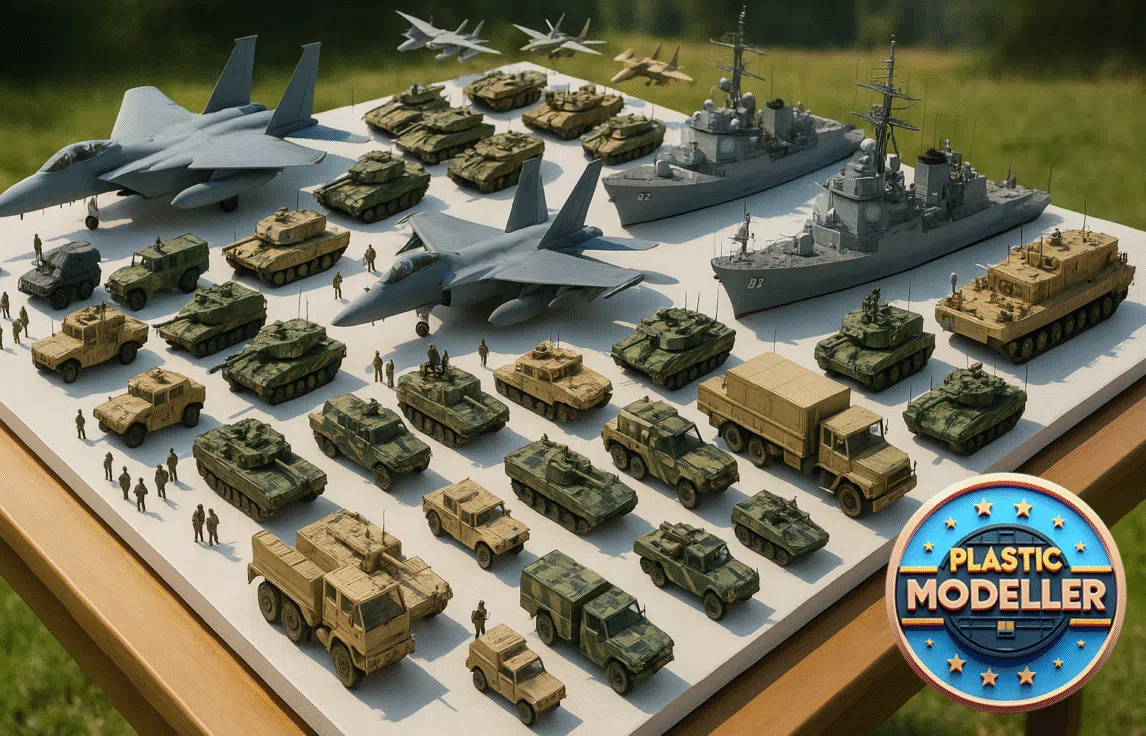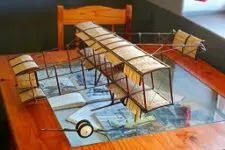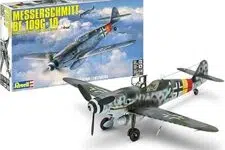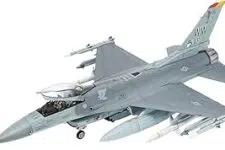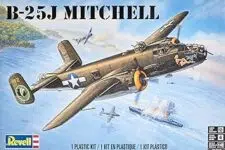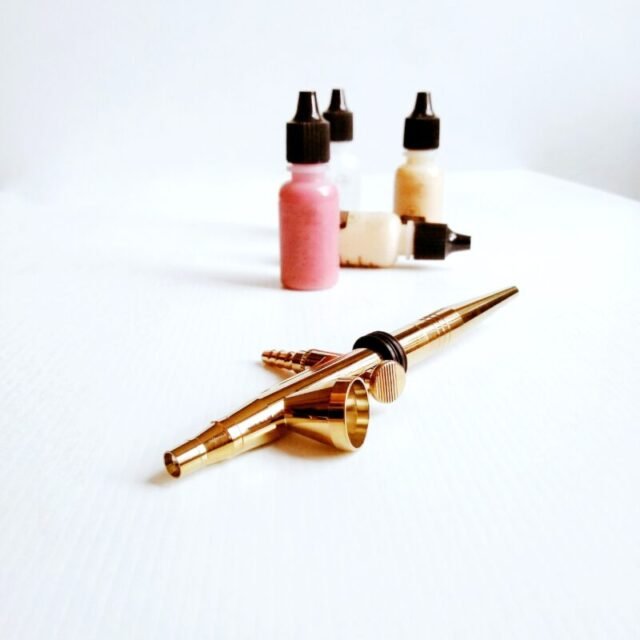
Table of Contents
Introduction to airbrushing for model making
Airbrushes for models are a versatile and precise method that has gained appeal among model makers. It enables the smooth and equal application of paint, resulting in breathtaking effects and improving the overall quality of your models. Investing in a high-quality airbrush is crucial to take your model creation to the next level. In this tutorial, we will look at the advantages of utilizing airbrushes for model construction. We will guide you through a thorough selection of the best airbrushes available at Amazon.com, one of the significant general stores for hobbyists.
Advantages of utilizing airbrushes for model making
Using airbrushes has various advantages over traditional painting methods. For starters, airbrushing allows for a smooth and even paint application, resulting in a professional-looking finish. This is especially useful when painting precise details on miniatures. Additionally, Airbrushes for models provide greater control and precision, allowing you to create gradients easily, fades, and shadowing. The tiny mist produced by an airbrush also reduces the possibility of paint pooling or brush strokes, resulting in a perfect surface. Furthermore, airbrushing is a time-saving technique that allows you to cover huge areas swiftly and efficiently.
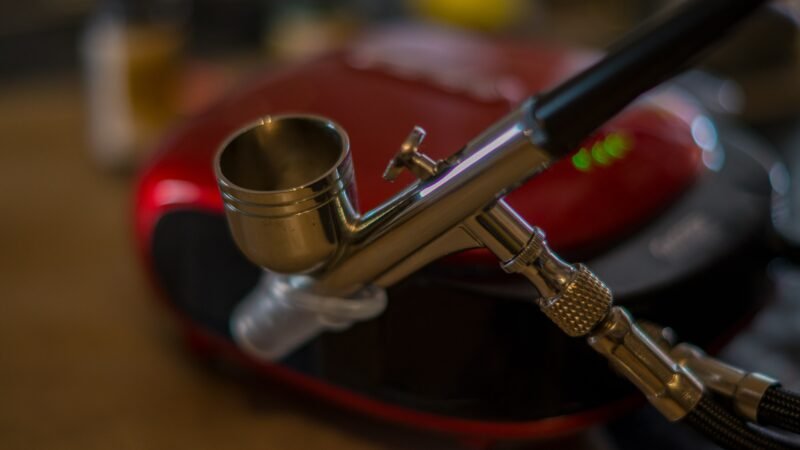
Factors to consider when purchasing an airbrush from Hobby Lobby
You should examine various variables before purchasing airbrushes for models to guarantee you get the correct one for your needs. First, you must determine the sort of airbrush you desire. There are two types: single-action and dual-action. Single-action airbrushes are easier to handle and manage, making them ideal for novices.
On the other hand, dual-action airbrushes allow greater control over paint flow and are preferred by expert model makers. Second, consider the needle and nozzle sizes. Smaller needle and nozzle sizes are appropriate for fine detail work, while larger ones are better for covering more significant areas. Finally, consider air source compatibility. Some airbrushes require an air compressor, while others can be used with canned air. Choose an airbrush that is compatible with your desired mode of air supply.
The best miniature airbrushes at Hobby Lobby
Airbrushes for models has a wide selection of quality airbrushes. Here are a few top picks:
1. Iwata Eclipse HP-CS Airbrush: This dual-action airbrush is widely respected among model makers for its versatility and precision. It has a 0.35mm needle and nozzle, making it excellent for fine detail work and covering big areas.
2. Badger Patriot 105 Airbrush: The Badger Patriot 105 is a dependable and durable airbrush ideal for novice and professional model designers. It has a 0.5mm needle and nozzle, perfect for general-purpose painting on miniatures.
3. Paasche Talon TG-3F Airbrush: The Paasche Talon TG-3F is a high-quality airbrush noted for its smooth paint flow and superb control. It has a 0.38mm needle and nozzle, making it ideal for producing tiny details on miniatures.
Beginner airbrush kits.

Buying a complete airbrush kit can be a terrific place to start if you’re new to airbrushing. These kits typically include an airbrush, a compressor or canned air, and essential accessories. Here are some recommended airbrush kits for beginners:
2. PointZero Airbrush Dual Action Airbrush Kit: This comprehensive kit includes a dual-action airbrush, a silent air compressor, and a variety of accessories. It also consists of a beginner’s guide to airbrushing, making it a good pick for those new to the art.
3. Badger Airbrush Co. Starter System: This kit includes a single-action airbrush, a small air compressor, and a variety of accessories. It is a low-cost choice for beginners who wish to try airbrushing without breaking the bank.
Airbrush Modeling Tips
1. Master Airbrush Starter package: This includes a dual-action airbrush, a small air compressor, and other accessories such as paint bottles, cleaning brushes, and an air hose. It has everything you need to get started with airbrushing.
Using airbrushes for models involves practice and some specialized techniques. Here are some pointers to get you started:
1. Practice on scrap materials: Before adding paint to your models, practice on scrap materials to become acquainted with the airbrush and its controls. This will give you more control and precision when working on your models.
2. Maintain proper air pressure: Adjust the air pressure to achieve the desired effect and the consistency of the paint you’re using. Lower air pressure is often suggested for fine details, whereas higher air pressure is appropriate for covering more significant areas.
3. Keep the airbrush clean: Clean your airbrush regularly to avoid obstructions and ensure smooth paint flow. * To disassemble and clean, use a suitable cleaning solution and follow the manufacturer’s instructions. In addition to airbrushes and kits, Scalemodelsonlinestore offers a variety of accessories and materials to enhance your airbrushing experience. Here are a few essential items to consider:
1. Airbrush paints: Scalemodelsonlinestore carries a range of airbrush paints in various colors and finishes. These paints are specially developed for airbrushing and give excellent coverage and stickiness.
2. Cleaning and maintenance supplies: Proper cleaning and maintenance are critical for the longevity of your airbrush. Scalemodelsonlinestore carries a variety of cleaning solutions, brushes, and maintenance equipment to maintain your airbrush in good working order.
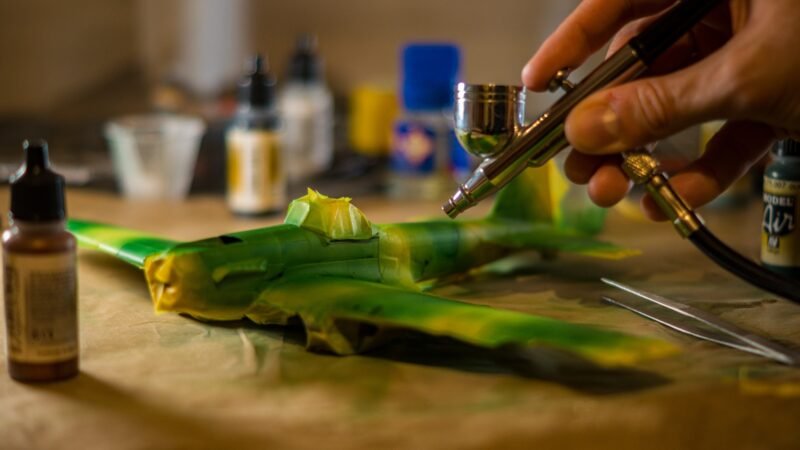
3. Making materials: Masking materials such as masking tape and liquid masks are crucial for creating crisp, clean lines when airbrushing. Scalemodelsonlinestore carries a variety of masking materials useful for a variety of model-making projects. When selecting an airbrush, evaluating other consumers’ pricing and reviews are critical. Look through several models, compare pricing, and read reviews.
Finally, let your imagination go wild with the best airbrushes from Amazon
Airbrushes for models are crucial for model makers because it provides precision, control, and striking results. We are a dependable supplier of high-quality airbrushes and supplies, catering to novice and professional model makers. You may unleash your imagination and take your model creation to new heights by selecting the proper airbrush and arming yourself with the essential equipment. So, look over their selection of airbrushes before embarking on a path of artistic expression with the best tools at your disposal.
How To Airbrush Models
Airbrushes for models are a popular technique used in various hobbies and vocations, including model construction, miniature painting, and vehicle customization. While the particular processes will vary based on the type of model and intended output, here is a general guide on how to airbrush models:
Gather the following supplies:
Airbrush: Select an airbrush that meets your needs and budget. There are single-action and dual-action airbrushes available.
Air compressor: Choose an air compressor that can deliver continuous airflow and pressure for your airbrush.
Acrylic paints are widely used for airbrushing models due to their versatility and ease of cleanup. Make sure you have a variety of colors for your project.
Thinner: Depending on the paint consistency and desired effects, you may need to thin the paint using an appropriate thinner.
Masking materials include masking tape, liquid masking fluid, and stencils, which make clear lines and protect specific regions.
Airbrush Spray Paint Booth: Airbrush spray paint booths are specifically designed to contain overspray during the painting process. They feature built-in ventilation systems that capture and filter the paint particles, preventing them from spreading into the surrounding environment. This containment helps maintain cleanliness and prevents paint residue from settling on nearby objects.

Cleaning materials include cleaning brushes, cleaning solutions, and a cleaning pitcher or jar for the airbrush.
Prepare the model:
Clean the model surface thoroughly to remove dirt, oil, or mold-releasing agents. This promotes appropriate paint adhesion.
Assemble and prime the model as needed, using an appropriate primer. Priming creates a smooth surface and improves paint adhesion.
Set Up Your Workspace:
Work in a well-ventilated, well-lit place.
Use a drop cloth or old newspaper to protect your workspace from overspray.
Practice And Testing:
Before beginning work on your model, practice airbrushing on scrap materials to become acquainted with the airbrush, paints, and compressor settings.

To get the ideal spray pattern, experiment with paint consistency and airflow. Adjust the air pressure accordingly.
Begin Airbrushing:
Begin with broad, light paint applications and gradually increase the desired color intensity. Multiple thin coats produce more remarkable results than a single hefty one.
Maintain a consistent distance between the airbrush and the model surface (typically 6-8 inches) to avoid overspray or uneven coverage.
Using controlled motions, move the airbrush smoothly and evenly across the surface.
Masking materials can be used to create sharp edges or to shield certain regions from overspray.
Allow Time For Drying And Touch-Ups:
Allow the paint to dry completely between coats or color changes to avoid smearing or mistakenly combining colors.
Use a fine brush to polish details or correct any mistakes if required.
Clean Your Airbrush:
Clean the airbrush thoroughly after your session or when changing colors to minimize paint buildup and clogging. Follow the manufacturer’s cleaning directions.
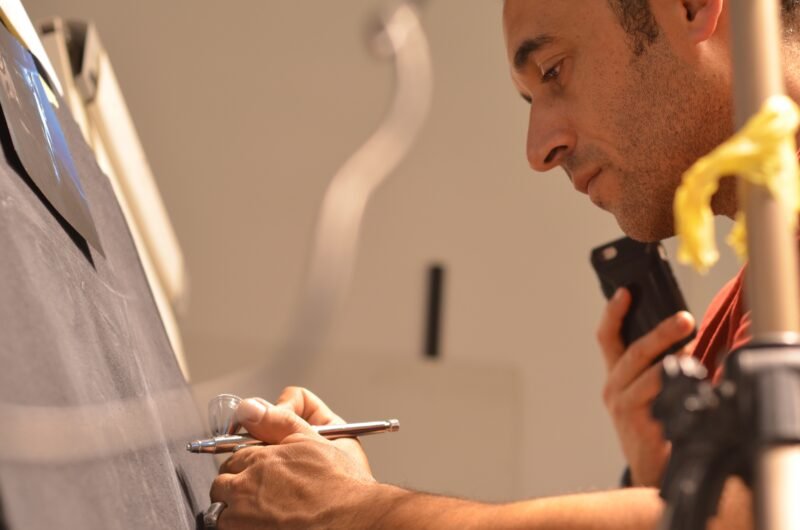
Remember that airbrushing models is a skill that requires practice and experimenting. Don’t be disheartened if you don’t attain perfection straight immediately. You’ll develop your technique and create unique airbrushed models as you gain expertise.
Choosing a High-Quality Airbrush
Depending on your unique needs and budget, there are various aspects to consider when selecting a high-quality airbrush. Here are some key points to remember:
Airbrushes for models are classified as follows:
Single-action airbrushes: These airbrushes feature a straightforward operation in which pushing the trigger releases air and paint simultaneously. Single-action airbrushes are frequently less priced and ideal for basic applications.
Dual-action airbrushes: These airbrushes provide you with more control over the airflow and paint volume. They include a trigger that allows you to control the air and paint separately. Dual-action airbrushes are more versatile and extensively utilized for precise work and detailed effects.
Goal and application:
Consider why you’ll be utilizing the airbrush. Do you intend to work on models, miniatures, automobile paintings, or fine art? Different applications may necessitate the use of airbrushes with specialized functionality.
Look for airbrushes for models that can provide the depth and precision you require. If you need to paint delicate lines or small details, use an airbrush with a fine nozzle size.

Build Quality and Durability:
Look for airbrushes composed of high-quality, long-lasting materials. Airbrushes with metal bodies, such as brass or aluminum, are more durable.
Consider the internal components, such as the needle, nozzle, and trigger mechanism. These should be well-built to ensure smooth functioning and ease of maintenance.
Ease of maintenance and cleaning:
Airbrushes must be cleaned and maintained regularly to function properly. Look for airbrushes that are simple to disassemble and clean. Models with removable pieces make it easier to reach and clean clogged components.
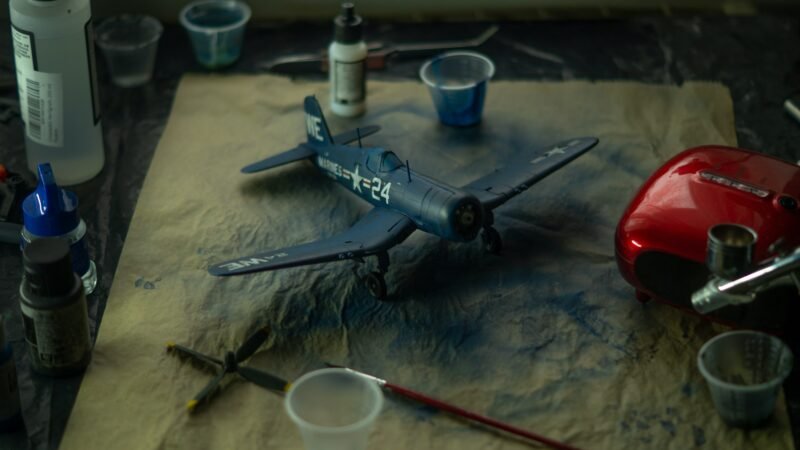
Check whether the manufacturer provides detailed cleaning instructions or if cleaning kits for the airbrushed model are available.
Accessories compatibility and availability:
Ensure the airbrush you purchase is compatible with various paint brands and types. This helps you to be more creative with your painting skills.
Consider the availability and range of accessories, such as multiple nozzle sizes, needle alternatives, and interchangeable parts. These add-ons can help your airbrush’s capabilities and accommodate a variety of jobs.
Price range and budget:
Airbrushes for models are available at different prices, from low-cost alternatives to high-end professional ones. Determine your budget and look for airbrushes that give good value for money based on their features, quality, and reputation.
Reviews and suggestions:
Read customer reviews and ask for advice from experienced airbrush users or professionals. Their thoughts help you make an informed decision and provide vital input on specific airbrush models.
Remember to explore and compare several airbrushes for models while considering your individual wants and preferences. Finally, the best airbrush for you will be determined by the type of job you intend to undertake, your skill level, and your budget.
The Most Effective Paint For Airbrushing
When selecting the most suitable paint for airbrushing, there are a few aspects to consider, such as the kind of paint, the consistency of the color, and the surface you will be working on. The following are some of the most popular alternatives that airbrush painters typically choose:
Acrylic Paint: Acrylic paints are famous for airbrushing because they are adaptable, dry quickly, and come in many colors. To acquire the desired consistency for airbrushing, they can either be thinned with water or an acrylic thinner. In addition, acrylic paints are long-lasting and may be used on various surfaces, including canvas, metal, plastic, and other materials.
Paint for Water-Based Airbrushes Water-based airbrush paints have been developed expressly for airbrushing and are compatible with most airbrush systems. These paints are often already thinned, eliminating the need for extra thinning on the user’s part. They have excellent flow and atomization, which results in even smooth coverage.
High-Flow Acrylic paints meant to have a thinner consistency are called high-flow acrylic paints. Because of this, high-flow acrylic paints are an excellent choice for airbrushing techniques. Because these paints are self-leveling, they reduce the likelihood of the nozzle of an airbrush being clogged. They come in a wide variety of colors, and they offer superior control and the ability to work on intricate details.
Paint for Automobiles and Motorcycles When airbrushing designs onto the surfaces of automobiles or motorcycles, automotive paints are a frequently used option. They offer excellent color matching, durability, and resistance to the damaging effects of ultraviolet light due to being specially developed for use in automotive applications. You must adhere to the instructions provided by the manufacturer when working with automotive paints because these products frequently call for unique thinners and primers.
Custom Airbrush Paints: Some artists favor using custom airbrush paints, frequently made with unique features such as great pigmentation, durability, or transparency. These paints can be purchased in a variety of colors. These paints, generally sold by specialty airbrush suppliers, offer a variety of effects and finishes that are unmatched by other pigments.
Always make sure that you verify the manufacturer’s guidelines for the airbrush that you are using. It is vital to remember that different airbrushes may have particular requirements regarding the consistency and viscosity of the paint. In addition, the ideal way to discover the color that complements your taste and aesthetic the most is to get some practice and try out a few other options.
Pointers For A Good Finishing.
Here are some pointers and strategies to keep in mind while using airbrushing to get a decent finish:
Airbrushing involves practice to gain control and become familiar with the equipment. Experimentation is also required. Invest some time in trying out a variety of colors, techniques, and pressures so that you can get a better understanding of how these elements work together to produce the desired effects.
When using an airbrush, it is essential to thin the paint to the appropriate consistency before beginning the application. Paint should be gradually diluted by adding tiny amounts of water or a compatible thinner until it can be sprayed through an airbrush without clogging or splattering. This should be done until the paint reaches the desired consistency. The optimum thickness is sometimes described as comparable to skim milk.
Maintaining the Appropriate Air Pressure:
Regulating the air pressure is essential in producing various effects. Lower pressures (about 10-20 PSI) are appropriate for more intricate details, while higher pressures (approximately 20-30 PSI) are more effective for more significant areas and more excellent coverage. Always check the advice provided by the manufacturer before using your airbrush.
Test Your Airbrush on a Surface Before Beginning Your Major Project It is a good practice to test your airbrush on a scrap or test surface before beginning your major project. This will allow you to confirm that the paint consistency, air pressure, and technique are providing the intended results.
Maintain a Consistent Distance It is essential to have the exact distance between the airbrush and the surface you are painting. A length of four to six inches is advised, but this number can shift depending on the look you’re going for and the kind of paint you’re working with. Try several distances until you find the best one for your project.
Apply the paint in thin layers and build it up gradually: Instead of attempting to attain full coverage in a single pass, apply several thin layers of paint. Adding new layers step-by-step results in more control and smoother transitions and helps prevent excessive paint buildup.
Techniques of Overlapping and Feathering:
Use overlapping and feathering techniques to generate seamless blends and gradients in your artwork. Painting techniques include feathering, which provides for gradually diminishing the pressure or paint flow at the boundaries of an area to create a softer transition, and overlapping, which involves applying successive coats of the paint slightly over the previous layer.
Airbrushes Should Be Regularly Cleaned and Maintained. It is essential to clean your airbrush regularly to avoid clogs and maintain optimal performance. Disassembly, cleaning, and subsequent reassembly should all be done following the instructions provided by the manufacturer. It is essential to do regular maintenance to preserve the integrity of the paint application.
Airbrushing needs precise control of both your hand movements and your body movements while you are painting. Experimenting with varied angles and orientations, in addition to keeping steady and consistent strokes or dots, will help you generate a variety of effects.
It is crucial to remember that attaining a decent finishing with airbrushing requires time, practice, and experimenting. Have patience, and be confident to make mistakes; this will help you avoid missing out on the opportunities that arise when you do.
Best Airbrushes for Model
There are many best airbrushes for models for painting miniatures that miniature artists highly appreciate. Here are some of the greatest airbrushes for miniature painting:
Iwata-Medea Eclipse HP-CS: The Iwata-Medea Eclipse HP-CS is popular among miniature painters. It has superb control, precision, and a precise spray pattern. It is a flexible airbrush that can be used for various styles, including fine work and broad coverage.
Harder & Steenbeck Infinity CR Plus: The Harder & Steenbeck Infinity CR Plus is noted for its remarkable build quality and precision. It has a self-centering nozzle mechanism that allows for constant paint flow and easy cleaning. It is excellent for fine detail work and is highly recommended for miniature painting.
Badger Patriot 105: The Badger Patriot 105 is a dependable and cheap solution for miniature painting. It is a gravity-feed airbrush that is versatile and simple to use. It strikes a beautiful mix between exquisite detail work and broad coverage.
Paasche Talon TG-3F: The Paasche Talon TG-3F is another popular choice among miniature painters. It has reasonable control and generates delicate lines and details. The Talon series is recognized for its smooth trigger action and ease of usage.
Grex Tritium TG: Grex Tritium TG airbrushes are well-known for their outstanding performance in miniature painting. They provide precision, control, and a precise spray pattern. The Tritium TG versions have a top-mounted paint cup for easy mobility and visibility.
These airbrushes are usually recommended for tiny painting, but personal preferences may differ. Consider your budget, specialized painting requirements, and personal comfort when selecting an airbrush. Furthermore, airbrushes are sometimes supplied in kits that include a variety of nozzle sizes and attachments, allowing for customization and adaptability to diverse painting techniques and styles.
